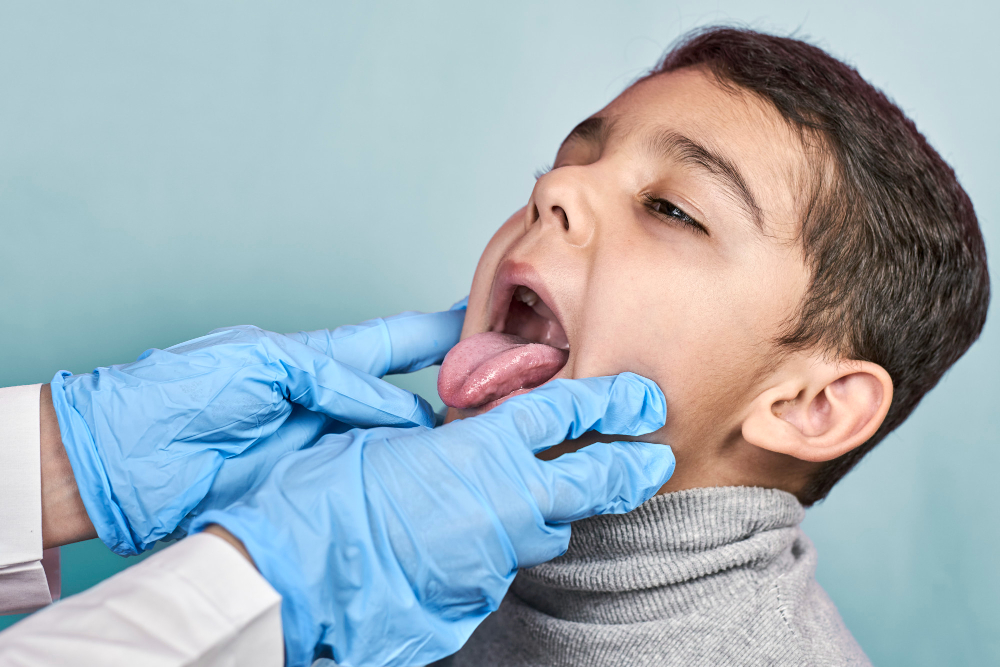Enlarged adenoids are a common issue in children. The adenoids are small tissues at the back of the nose. They help fight germs and protect your child’s health. However, sometimes adenoids become too large. This can cause problems with breathing, sleeping, and ear health. In this blog, we will explain what enlarged adenoids are, their symptoms, causes, diagnosis, and treatment options. We will also share tips for parents and explain when to see a pediatric ENT specialist.
What Are Enlarged Adenoids?
Adenoids are soft tissues located high in the throat, behind the nose. They are part of the immune system and help trap germs. When adenoids become swollen or larger than normal, they are called enlarged adenoids. This can block airflow through the nose and cause other health issues. Children often have larger adenoids than adults. As children grow, their adenoids usually shrink.
Symptoms of Enlarged Adenoids
Enlarged adenoids can cause many symptoms in children. Some signs are easy to notice. Others may be more subtle. Look for these common symptoms:
Causes of Enlarged Adenoids
Several factors can cause adenoids to become enlarged. Often, infections are the main reason. For example, colds, sore throats, or allergies can make adenoids swell. Some children are more likely to have enlarged adenoids due to:
Additionally, children between ages 3 and 7 are most at risk. Their adenoids are naturally larger during these years.
How Enlarged Adenoids Are Diagnosed
If you notice symptoms, it is important to see a doctor. The doctor will ask about your child’s health and symptoms. Next, they may examine your child’s nose, throat, and ears. Sometimes, a small mirror or a flexible camera is used to look at the adenoids. In some cases, an X-ray may help. If your child has trouble breathing or sleeping, further tests may be needed. Early diagnosis helps prevent complications.
Treatment Options for Enlarged Adenoids
Treatment depends on your child’s symptoms and health. For mild cases, doctors may suggest:
However, if symptoms are severe or do not improve, surgery may be needed. This surgery is called an adenoidectomy. It is a safe and common procedure. Doctors often recommend surgery if your child has:
After surgery, most children recover quickly and feel better soon.
Home Care and Prevention Tips
There are steps you can take at home to help your child. For example, keep your child away from smoke and dust. Encourage good handwashing to prevent infections. Make sure your child drinks plenty of water. Use a humidifier in your child’s room if the air is dry. If your child has allergies, follow your doctor’s advice to manage them. These steps can help reduce symptoms and prevent problems.
When to Consult a Pediatrician
It is important to see a pediatrician if your child:
Early care can prevent serious issues. A pediatric ENT specialist can provide the best advice and treatment.
Reliable Sources and References
If your child shows signs of enlarged adenoids, consult a pediatrician for personalized advice and care.

